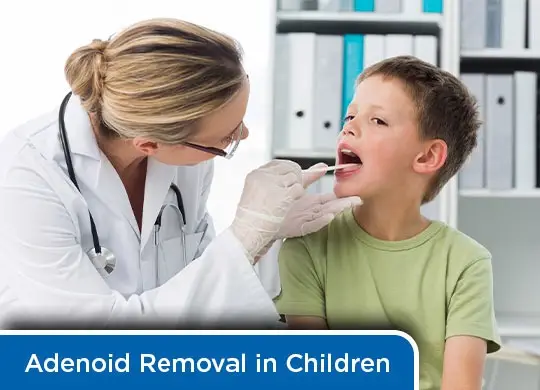Adenoid removal in children is a common yet often misunderstood procedure. If your child frequently suffers from nasal blockages, snoring, or recurrent ear infections, your doctor might recommend an adenoidectomy. But what exactly does it involve? How long does recovery take? And most importantly, how can you support your child through it? In this practical parental guide, we break down the entire journey step by step, so you can make informed decisions and help your little one heal faster.
What Are Adenoids and Why Do They Matter?
Adenoids are small lymphatic tissues behind the nose, high in the throat. Unlike tonsils, they can’t be seen just by opening the mouth, but they play a similar role: filtering bacteria and viruses from the air your child breathes. In young children, adenoids help build immunity. However, these tissues often shrink as they grow and become less important.
So why do they cause problems?
In some kids, adenoids become swollen or chronically infected. This can block airways, lead to sleep disturbances, and cause frequent ear or sinus infections. When medications don’t help, doctors may recommend an adenoidectomy — the surgical removal of the adenoids.
Signs Your Child May Need Adenoid Removal
Many parents don’t realize that chronic snoring or mouth breathing might be linked to enlarged adenoids. Here are common signs:
- Mouth breathing during the day or night
- Snoring or noisy breathing while sleeping
- Sleep apnea (pauses in breathing during sleep)
- Frequent ear infections or glue ear
- Recurring sinus infections
- Nasal voice
- Difficulty swallowing
- Chronic runny nose or postnasal drip

The Adenoid Removal Procedure Explained
Adenoid removal is a quick and safe outpatient surgery that usually takes 15 to 30 minutes under general anesthesia. Here’s what happens:
- Step 1: Pre-op Preparation
Your child won’t be allowed to eat or drink for several hours before surgery. The surgical team will explain everything to you beforehand. - Step 2: General Anesthesia
Your child will sleep through the entire procedure. - Step 3: Removal
Using special tools, the surgeon will remove the adenoid tissue through the mouth — no external incisions are made. - Step 4: Recovery Room
After surgery, your child will wake up in a recovery area and be monitored for 1–2 hours.
What to Expect on the Day of Surgery
The day of surgery can be stressful for both you and your child. Here’s how to make it smoother:
1. Before You Leave Home:
- Dress your child in comfortable clothing.
- Pack their favorite stuffed toy or blanket.
- Bring necessary documents and ID.
- Make sure they haven’t eaten (per hospital instructions).
2. At the Hospital:
- You’ll meet the anesthesiologist and surgeon.
- Once your child is taken into the operating room, you’ll wait in a designated area.
- The actual procedure is fast, and you’ll be reunited shortly after.
Recovery Timeline & Home Care Tips
Recovery is usually quick — around 7 to 10 days — but your support is key to making it comfortable.
1. Recovery Timeline:
- Day 1–2: Mild sore throat, sleepiness from anesthesia.
- Day 3–5: Possible bad breath and nasal congestion.
- Day 6–10: Gradual return to normal, less discomfort.
2. Home Care Tips:
- Rest: Encourage plenty of sleep and quiet play.
- Hydration: Keep fluids flowing (water, ice pops, coconut water).
- Soft diet: Start with soups, mashed potatoes, khichdi, and curd rice.
- Pain relief: Use doctor-prescribed paracetamol or ibuprofen.
- Avoid spicy/hard foods: These can irritate healing tissue.
Emotional Support: Helping Your Child Cope
For a child, surgery can be scary. Here’s how you can help emotionally:
- Talk it through: Use simple words to explain what’s happening.
- Stay calm: Your child senses your emotions — staying composed helps them feel safe.
- Post-op cuddles & comfort: Gentle care, soft food, and familiar routines work wonders.
- Praise bravery: A small gift or reward after surgery can motivate and reassure.
When to Contact Your Doctor After Surgery
After surgery, most kids recover smoothly. But be alert for:
- Bright red bleeding from the mouth or nose
- Fever above 101°F (38.5°C)
- Breathing difficulties
- Refusing fluids for more than 12 hours
 +919979891672
+919979891672 











No Comments